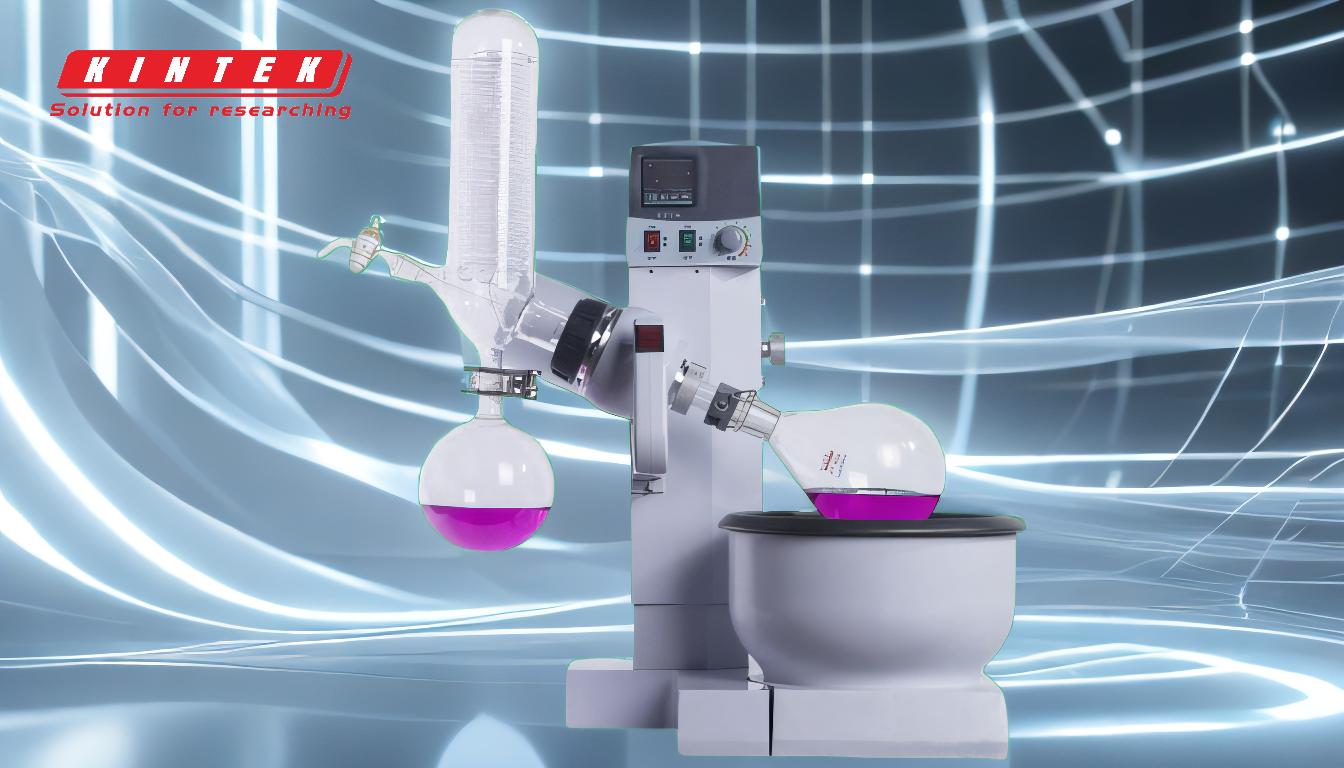Yes, you can rotovap ethyl acetate. Ethyl acetate is a common solvent used in laboratories, and its properties make it well-suited for rotary evaporation. Rotary evaporation (rotovap) is a technique used to remove solvents from a solution under reduced pressure and controlled temperature, allowing for efficient and gentle separation of volatile solvents like ethyl acetate.
Key Points Explained:

-
Suitability of Ethyl Acetate for Rotary Evaporation:
- Ethyl acetate has a relatively low boiling point (77.1°C at atmospheric pressure), which makes it ideal for rotary evaporation. Under reduced pressure, its boiling point decreases further, allowing it to evaporate at lower temperatures, minimizing the risk of thermal degradation of sensitive compounds in the solution.
-
Process of Rotary Evaporation:
- The solution containing ethyl acetate is added to the starting flask of the rotovap.
- A water bath is prepared and maintained at a temperature slightly above the boiling point of ethyl acetate under the applied vacuum (typically 30–40°C).
- A vacuum pump is activated to reduce the pressure inside the system, lowering the boiling point of ethyl acetate and causing it to evaporate.
- The evaporated ethyl acetate travels to the condenser chamber, where it is chilled and condensed back into liquid form.
- The condensed ethyl acetate is collected in a receiving flask, separating it from the rest of the solution.
-
Advantages of Using Rotary Evaporation for Ethyl Acetate:
- Gentle Separation: The process avoids high temperatures, reducing the risk of degrading heat-sensitive compounds.
- Efficiency: Ethyl acetate evaporates quickly under reduced pressure, making the process fast and efficient.
- Oxidation Prevention: The closed system of the rotovap minimizes exposure to air, preventing oxidation of the solution.
-
Considerations for Rotovapping Ethyl Acetate:
- Vacuum Level: Ensure the vacuum pump is capable of achieving the required pressure to lower the boiling point sufficiently.
- Temperature Control: Maintain the water bath temperature carefully to avoid overheating or under-evaporation.
- Safety: Ethyl acetate is flammable, so ensure proper ventilation and avoid open flames or sparks in the vicinity.
-
Applications:
- Rotary evaporation of ethyl acetate is commonly used in organic synthesis, pharmaceutical research, and chemical purification processes where ethyl acetate is used as a solvent.
In summary, rotary evaporation is an effective and safe method for removing ethyl acetate from solutions, leveraging its low boiling point and volatility under reduced pressure. Proper setup, temperature control, and safety precautions ensure efficient and reliable results.
Summary Table:
| Aspect | Details |
|---|---|
| Boiling Point | 77.1°C (at atmospheric pressure), lower under reduced pressure |
| Process | Solution added to rotovap, water bath at 30–40°C, vacuum applied |
| Advantages | Gentle separation, fast evaporation, prevents oxidation |
| Considerations | Vacuum level, temperature control, safety precautions |
| Applications | Organic synthesis, pharmaceutical research, chemical purification |
Optimize your lab processes with rotary evaporation—contact us today for expert guidance!











